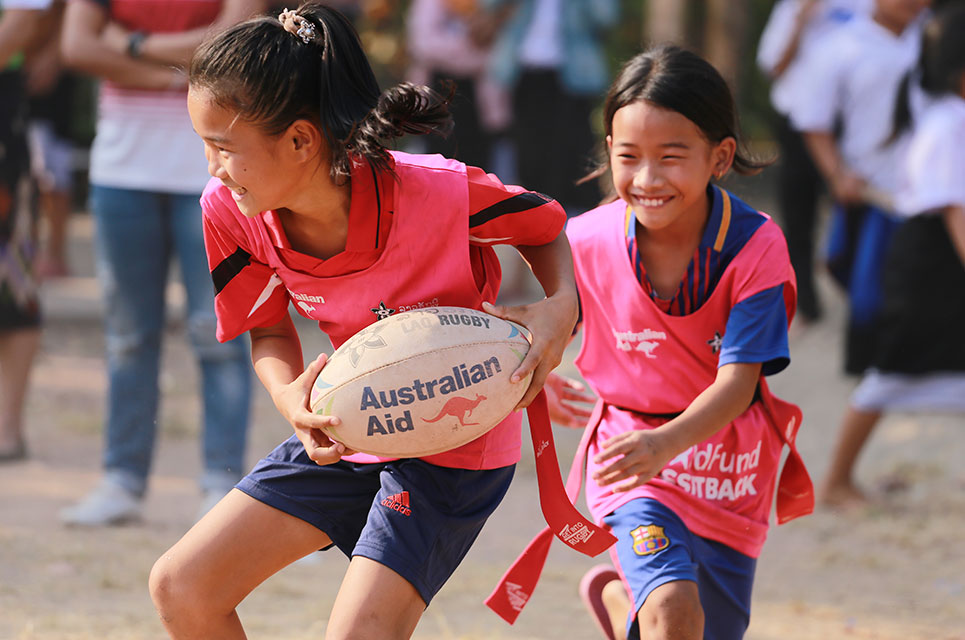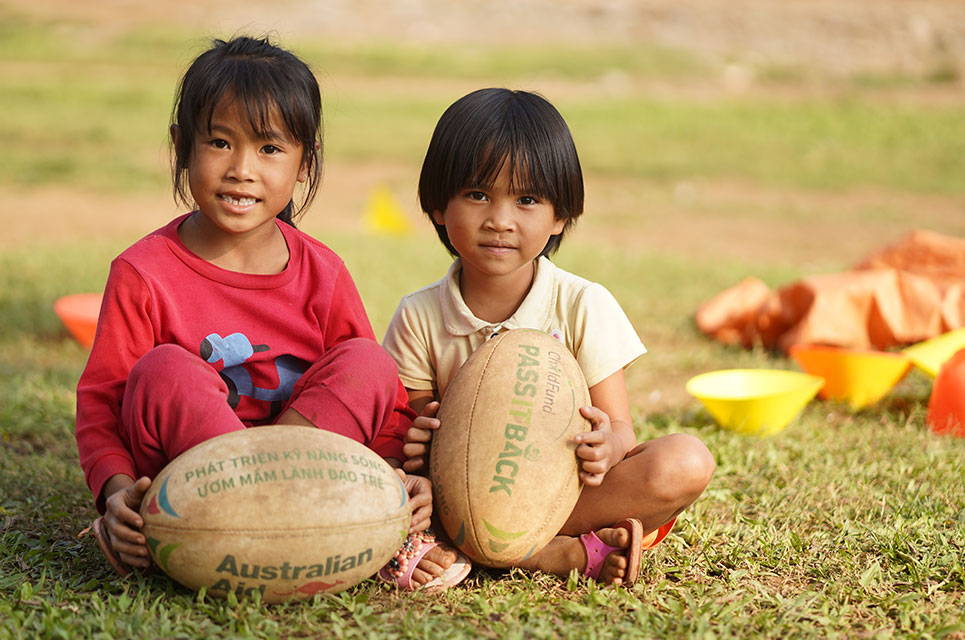現在あなたのバスケットは空です
There are few parents who don’t understand the many benefits for children that come from taking part in team sports. Physical coordination is one of them.
Improved health, Better communication, social skills, discipline and respect for others – these are just some of the advantages that accrue for kids all while they are having fun and exercising.
For those taking part in a sport for development program like ChildFund Pass It Back, which uses sport as a tool to provide important learning opportunities, the benefits go even further. In Laos, The Philippines, Timor-Lest and Vietnam, young players are also gaining life-long skills in areas such planning for the future, gender equality and conflict resolution.

Not every child needs to be able to bend it like Beckham or slam like Serena, but a good level of physical coordination can be extremely beneficial.
Sport also plays a vital role in developing a child’s coordination – their ability to control the movements of their body. Gross motor skills help children to catch or kick a ball, run without tripping over, and to jump and land on their feet. As a result, children are less likely to get injured when taking part in physical activities.
According to research from the University of Leeds, young children with better eye-to-hand co-ordination are more likely to achieve higher scores for reading, writing and maths.
Not every child needs to be able to bend it like Beckham or slam like Serena, but a good level of physical coordination can be extremely beneficial. So, how does a game like rugby build coordination skills for children?
Balance
An experienced rugby player has trained their body to shift their momentum from one point to another without ever losing balance.
The evasive moves are a key part of any rugby game. Even the youngest children, after learning to catch and pass, will immediately begin practising ways to evade defenders.
These moves require excellent balance, which is essential if children are to achieve control and coordination over their body movements.
Over time, as children continue to practice and develop these moves, and defend elusive attacking players, their balance will improve dramatically.
Hand-eye coordination
Whether you are throwing the ball in the backyard or playing in a World Cup Final, hand-eye coordination is an extremely important part of rugby.
One of the first skills a rugby player learns is the ability to catch a ball and accurately pass it to their intended destination.
If you have ever attended an under-six rugby game (or tried playing catch with a toddler), you will know that children are not born with this ability.
Over time, children will go from barely bobbling a lobbed ball to confidently catching anything that is thrown (or kicked) at them.
The fun, and constant, act of passing the ball will also help children improve their depth perception and their ability to accurately hit targets that are a long distance away.
Spatial awareness
Most children develop some special awareness early in life – it stops them from knocking into furniture as they learn to walk – but playing a sport like rugby will help them fine tune this ability, which can increase their dexterity and balance.
The first time you gently lob a ball to your child they will throw their hands up ready to catch the ball, with no idea how far away the ball is and when it will arrive in their hands.
After a playing rugby for a short time, and catching and passing the ball with their friends, this skill will develop, and is essential to improving overall coordination.
Eventually, your child be able to spot an object that is coming towards them, whether it’s a ball or an opposition player, immediately identify the distance that separates them and act accordingly.

